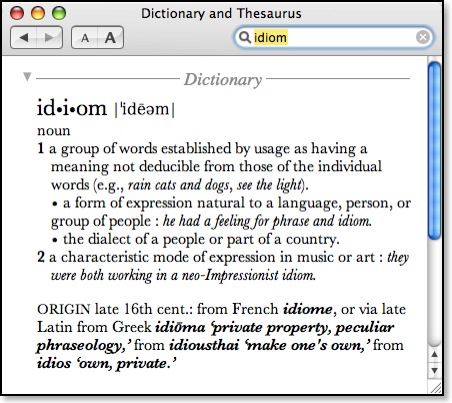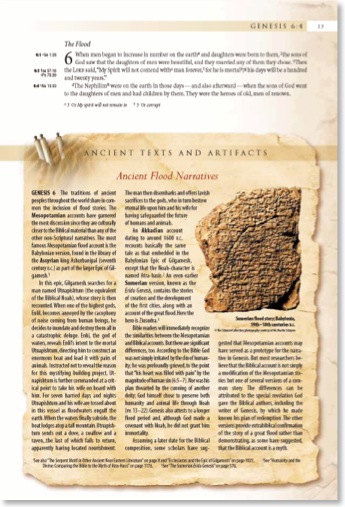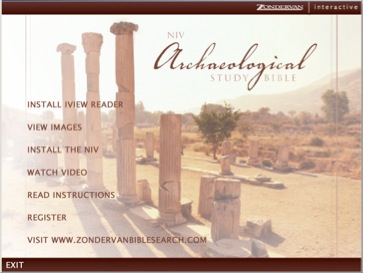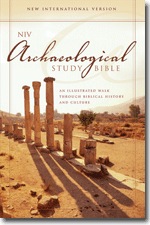Updates for Reformation Day, 2006
As an Amazon.com Associate, I made $33.49 in referrals last quarter. My thanks go to all of you who made purchases through my online store or through one of the links on my blog. Amazon has reserved a gift certificate for me in the above amount which I will save for specific use toward my degree. Inevitably I regularly come across this or that book that is difficult to find, but I often can get it through the used book sellers on Amazon. So thanks again to all of you.
A few weeks back I wrote about a former student of mine, Josh Clark, who had worked up a scheme to get his own Mac by asking folks to donate $1 through PayPal. Although he raised about $67 this way, the funds eventually stopped coming in. Then he found another scheme that just happened to work. He researched the companies that offer free computers once you sign up for so many offers. He followed one of them through to the end and now he actually has a MacBook Pro which after all was said and done cost him about $30! Read his story at "How I Got a Mac for Next to Nothing."
Finally, the next installment on my favorite Bible translations (#8, the GNT) was halfway finished at the end of last week, but I'm neck-high grading papers for both IWU and SBTS and have had to make those a priority over everything else. Hopefully, I'll have that posted by the end of this week, so stay tuned.
And Happy Reformation Day!
More on 1 John 3:24 in the ESV: Change Is Coming
The post, as its title implied, was meant in fun as a number of ESV proponents have been critical of the use of singular they in the TNIV. At the time, I felt that the ESV rendering of 1 John 3:24 was simply an error on the part of the editors and I said so:
What's the real story here? The use of them for αὐτῷ in the ESV rendering of 1 John 3:24 comes from the legacy of the RSV which reads, "All who keep his commandments abide in him, and he in them." As standard practice the RSV (rightly) did not capitalize pronouns referring to deity. So to keep from confusing the reader, the RSV translators changed the singular ὁ τηρῶν ("the one keeping" or "the one who keeps") to a plural ("all"). In changing the antecedent subject to a plural, it was necessary to change the corresponding pronoun to a plural as well ("them").
What's interesting is that the ESV translators, in revising the RSV, changed the subject in 1 John 3:24 back to a singular, but failed to do change back the corresponding pronoun to match its antecedent. Why? Well, my hunch is that in keeping with the reality that the use of singular they has never left informal modes of communication and therefore sounds perfectly natural to most hearers, I believe the ESV translators simply overlooked it.
So on Monday of this week over on the ESV blog, they announced that the ESV English-Greek Reverse Interlinear New Testament had finally been made available. On the Bible Translation Discussion List, David Dewey pointed out that the page of the Interlinear shown on the ESV blog displayed a change in 1 John 3:24. The revised ESV rendering of the verse reads
Whoever keeps his commandments abides in God and God in him.
I have to believe the particular page displayed was chosen on purpose and that Stephen Smith, the webmaster at Crossway, was sending a wink to the folks who had noticed the ironic issue in the original ESV rendering of the verse.
So, I should say, bravo to the ESV revisers. They have made two changes here. Outside of using a singular they, changing the αὐτῷ (literally him, a dative 3rd person masculine pronoun) to "God" AND changing αὐτὸς (literally he, a nominative 3rd person masculine pronoun) also to "God" best communicates the meaning of the original text. And when translators choose to communicate the meaning of the text over the literal words, I believe we call this dynamic equivalence. ![]()
Does God Call Ministers in "Package Deals"?
Over on Wade's Rants, Philip has addressed this issue and he minces no words in the process. Of course, Philip Wade is a minister of music, so his concern is quite understandable, but he is certainly right. Ministers of any position should never come into a church with hidden agendas.
There is a dangerous trend that I have seen being allowed in SBC churches, namely the formation of a "covenant" between a prospective pastor and minister of music. This has happened to a friend of mine, resulting in his being forced to leave a ministry in which he was very successful, and has recently occurred at one of the largest SBC churches in the country. I believe this is the natural progession of things when we redefine a pastor as CEO, and not a shepherd, leading a flock.
Be sure to read Philip Wade's entire rant for yourself.
The Evolution of John 1:18 [UPDATED]
| John 1:18 in the NIV Tradition | |
|---|---|
| NIV (1978) | No one has ever seen God, but God the only* Son,** who is at the Father's side, has made him known. Notes: *Or but God the only begotten **Some manuscripts but the only Son (or but the only begotten Son) |
| NIV (1984) | No one has ever seen God, but God the One and Only,* **who is at the Father's side, has made him known. Notes: *Or the only begotten **Some manuscripts but the only (or only begotten) Son |
| NIrV (1996; 1999 revision reads the same) | No one has ever seen God. But God, the one and only Son, is at the Father's side. He has shown us what God is like. No notes. |
| NIV (Inclusive Language Edition, released only in UK, 1996) | No-one has ever seen God, but God the One and Only,* **who is at the Father's side, has made him known. Notes: *Or the only begotten **Some manuscripts but the only (or only begotten) Son |
| TNIV (2005) | No one has ever seen God, but the one and only Son, who is himself God and* is in the closest relationship with the Father, has made him known. Note: *Some manuscripts but the only Son, who |
The textual issue here is well known. Older translations used the phrase "only begotten Son" [μονογενὴς υἱός] but with the discovery of p66 and p75, many later twentieth century translations began using "only begotten God" [μονογενὴς θεὸς]. In Metzger's Textual Commentary (I have the 3rd edition; someone let me know if later editions read differently) the latter reading is given a B rating because p66 and p75 are older and μονογενὴς θεὸς is undeniably the more difficult reading. A concise but thorough explanation of the issues is found in the NET Bible notes. Interestingly, the HCSB is the only contemporary translation I've come across that reverts back to "one and only Son" [μονογενὴς υἱός].
The transitions in the NIV tradition are interesting because in the original 1978 edition, both Son [υἱός] and God [θεὸς] were incorporated into the text, although this was dropped in the NIV's final form (1984) in favor of the more accepted μονογενὴς θεὸς. And although the Inclusive Language Edition of the NIV in 1996 made no changes to the 1984 NIV regarding this verse, a year earlier, the NIrV went back to the 1978 NIV's incorporation of both textual traditions. Both traditions are also incorporated into the TNIV, although the emphasis surprisingly seems to be on the later textual tradition, μονογενὴς υἱός, translated as "the one and only Son."
I'd really be interested to know the reasoning behind using both "God" and "Son" in the rendering of the verse. Although the TNIV.info website offers a rationale for the wording in John 1:18, it's not specific enough to fully address this issue.
Incidentally, a number of other translations have also incorporated both Son and God into their rendering of John 1:18 including the REB, NRSV, NLT, and GWT, so the TNIV is in good company. However my only problem with using both traditions in the verse is that a translation has been created which could not possibly be reflected in any ancient manuscript. I'd be interested in anyone's insight into this issue.
Update (10/23, 9:30 AM): Be sure to click the comments link below for a solution to this problem by Suzanne McCarthy (whose mastery of Greek is far superior to mine). She says that the translations are not combining two textual traditions at all, but rather
Monogenes by itself is considered to be the "only son." It is read as a noun not an adjective in this verse. Have a look at John 1:14. So no one is combining two readings of a manuscript, at least not this time.
Be sure to read her entire explanation in the comments below. I do remember reading that μονογενὴς by itself could be rendered "only Son," but I didn't grasp that this is what the TNIV translators were doing in this verse. And I still find it very interesting that they delivered a similar rendering in the very first edition (1978) NIV, and then moved away from it by the 1984 release. Surely those debates must have been interesting. And obviously, this way of rendering John 1:18 is not a fully accepted solution since there is not agreement among all recent translations, but there is certainly an overwhelming consensus.
For the sake of comparison, here is the full Greek text for the verse for reference and the translations that have used similar renderings to what is done in the original NIV and TNIV:
Θεὸν οὐδεὶς ἑώρακεν πώποτε· μονογενὴς θεὸς ὁ ὢν εἰς τὸν κόλπον τοῦ πατρὸς ἐκεῖνος ἐξηγήσατο.
________________________
No one has ever seen God; but God's only Son, he who is nearest to the Father's heart, he has made him known (NEB, 1970).
No one has ever seen God, but God the only Son, who is at the Father's side, has made him known (NIV, 1978).
No one has ever seen God; God’s only Son, he who is nearest to the Father’s heart, has made him known (REB, 1989).
No one has ever seen God. It is God the only Son, who is close to the Father’s heart, who has made him known (NRSV, 1990).
No one has ever seen God. The only Son, who is the same as God and is at the Father's side, he has made him known (GNT, 1992)
No one has ever seen God. God’s only Son, the one who is closest to the Father’s heart, has made him known (GWT, 1995).
No one has ever seen God. The only Son, who is truly God and is closest to the Father, has shown us what God is like (CEV, 1995).
No one has ever seen God. But God, the one and only Son, is at the Father's side. He has shown us what God is like (NIrV, 1996/1999).
No one has ever seen God. But his only Son, who is himself God, is near to the Father’s heart; he has told us about him (NLT1, 1996)
No one has ever seen God. But the one and only Son is himself God and is near to the Father’s heart. He has revealed God to us (NLT2, 2004).
“No one has ever seen God, but the one and only Son, who is himself God and is in closest relationship with the Father, has made him known (TNIV, 2005).
________________________
Translations rendering μονογενὴς as an adjective modifying θεὸς (this cannot be called a "traditional" rendering because it only occurs beginning in 20th Century):
No one has ever seen God, but God the One and Only, who is at the Father’s side, has made him known (NIV, 1984/1996).
No one has seen God at any time; the only begotten God who is in the bosom of the Father, He has explained Him (NASB, 1995).
No one has ever seen God; the only God, who is at the Father’s side, he has made him known (ESV, 2001)
________________________
The only modern translation using the older (pre-p66 and p75) rendering:
No one has ever seen God. The One and Only Son--the One who is at the Father’s side--He has revealed Him (HCSB, 2004).
Grinding Another Man's Grain
Consider, for example, a passage I came across today while preparing a talk I'll be giving tomorrow morning to the men at my church. Since we won't be in mixed company, I'm going to address the growing issue of internet pornography. I'm using Job 31:1-4 as my opening text. But in looking at that passage in the context of the whole chapter, I was struck by the way various translations handle Job 31:9-10:
| Job 31:9-10 | ||
|---|---|---|
NASB |
TNIV |
NLT |
| If my heart has been enticed by a woman, Or I have lurked at my neighbor’s doorway, May my wife grind for another, And let others kneel down over her. |
If my heart has been enticed by a woman, or if I have lurked at my neighbor’s door, then may my wife grind another man’s grain, and may other men sleep with her. |
If my heart has been seduced by a woman, or if I have lusted for my neighbor’s wife, then let my wife belong to another man; let other men sleep with her. |
The three translations shown above represent the translational scale from fairly literal on the left to fairly free on the right with the TNIV right in the middle. Notice that in the second line of v. 9, the metaphor is not only retained quite well in the NASB, but also in the TNIV which renders it almost identically. In regard to faithfulness to one's wife, what would it mean to "lurk at my neighbor's doorway"? The imagery is very specific because it's not the same as "entering my neighbor's house" which would imply something far more. The NLT, therefore, spells it out for the reader: "I have lusted for my neighbor's wife." This translation is not unfaithful to the meaning of the idiom, but the idiom itself has been lost.

On the other extreme is the NLT's removal of the idiom altogether with "then let my wife belong to another man; let other men sleep with her." Again, this rendering is not incorrect, but it loses the cleverness of the phrase so skillfully captured in the TNIV's "then let my wife grind another man's grain." The way this is worded in the TNIV the reader can read it, perhaps read it a second time, and after raising an eyebrow or two, really get the picture of what Job was saying. Even though the idea of "grinding another man's grain" is not an idiom contemporary to our culture, it should still be understandable to the average reader today because of the way the TNIV words it. The NASB's "May my wife grind for another" is too obscure in its literalness.
Essentially, each line in 31:9-10 contains its own idiom--even v. 9a, but we use heart in connection with affection even today, so even the NLT essentially retains the original wording here and rightly so. The idiom in 9b is retained in the NASB and the TNIV, but not in the NLT. The idiom in 10a is kept in the NASB, TNIV, but not in the NLT, but is only clearly intelligible in the TNIV because the NASB is overly literal. 10b's idiom is only retained in the NASB, but because it is not an idiom used in our culture and because of the NASB's over-literalness, it's meaning is mostly lost.
Personally, I like the cleverness of idioms when I can use them in a Bible study setting. I can't fault the NLT for inaccuracy in these two verses, but I feel like something from the text's literary power is lost in making everything so plain to us. For Job to state the words about his wife seem harsh enough as it is (they didn't seem to have a lot of affection for each other throughout the whole story), but it's even colder in the NLT. The TNIV seems to find the best happy medium for this passage by leaving three of the four idioms intact and not translating them too literally.
Side note: to be fair to the NLT, the translators do not always flatten out the meaning of idioms. For instance, Judges 14:18, "If you hadn't plowed with my heifer, you wouldn't have solved my riddle!" will be understandable to most regardless of one's agricultural background!
IE6/Windows Users: IE7 Is Available. Download It for the Love of Margaret

I have repeatedly urged Windows users to abandon IE6, which has not been significantly updated since 2001 and has not kept up with advances in Internet standards. And of course by security standards, IE6 has also been the clear loser. Over the past few months, I have continually had to "dumb down" my website so that IE6 users can make sense of it. .PNG graphics don't work correctly in IE6, and neither do cascading style sheets.
So, all that to say...if you are still using Windows Internet Explorer 6, welcome to 2003 because Internet Explorer 7 is now available for download and will bring you up to date with web standards that the rest of us have been using for awhile, including tabbed browsing and integrated RSS feeds.
IE 7 can be downloaded at http://www.microsoft.com/windows/ie/ and in the next few weeks will become part of the automatically downloaded updates in Windows XP.
Of course I still recommend you just get a Mac instead, but if you can't do that, at least use a modern web browser.
Update: IE7 has not even been out yet for 24 hours and a security flaw has already been discovered. IE7 is still better than IE6, but other options may be a better choice.
Closed for Christmas (The Missing THIS LAMP Blog Entry)
In December of last year, the Lexington Herald Leader (the secular press, mind you) broke a story questioning why some churches had announced that they would not be open for services since Christmas fell on Sunday. Ben Witherington responded to it on his blog, and that's how I discovered it. Over the next few days leading up until Christmas, this issue would create quite a bit of controversy especially in evangelical discussions. However, This Lamp did not take part in the discussions because I pulled the article. Why?
Kathy and I had made the difficult decision to leave a church where we had been members, and I had been on staff on two separate occasions, for twelve years. This was a very difficult decision for us, but after moving to an entirely different county the year before, the commute--while not totally unmanageable--began to affect our participation, especially any mid-week activities. Further, after a number of years of reflection, I had grown increasingly convicted about the necessity of being part of a neighborhood church, not one that took me out of my local community (see my series "Rediscovering the Neighborhood Church" in the Site Index).
In leaving our former church for one literally within walking distance of our home, I tried very hard to emphasize to people at our former church that we were not leaving over disagreements or any of the normal, often petty reasons many people leave churches. I wanted to stay in good standing with our former church because I loved it and her members dearly.
So on December 5, 2005, a little while after posting the blog entry below which decried closing church doors on Sunday, I thought I should check the website of my former church. To my surprise, I saw that they, too, had planned to cancel Sunday services on Christmas. Out of propriety, because I didn't want anyone to think I was making a passive-aggressive stab at my former church, I pulled the post.
I believe enough time has passed that I can make the post again. By now I hope that no one has negative ideas about why we left our former church. And I hope that the issue of Christmas/Sunday services could be discussed in a time when it is not so much of a pressing issue. However, it is an important issue and will come up again in a mere five years. Rereading my self-censored post again, I realize that my mind has not changed a bit on this issue. We have five years to plan for Sunday Christmas services in 2011. Why not make this the most memorable celebration of a generation?

Does this make sense? Yes, the family is important, but do we promote the family OVER community worship on this Christian high day? What's next? No service on Easter because it also falls on the Lord's Day? The word Christmas itself comes from "Christ's Mass," one of the most significant worship days in the church's calendar.
I remember as a small child (probably about six-years-old) speculating that if Christmas ever fell on a Sunday (two holy days together), perhaps the Lord would return on that day. I didn't realize that this exact thing had already happened many times over the centuries. But even as a child, I saw the significance of these two days occurring together.
It makes you wonder if such a decision is best when even the secular media asks, "Why Do Churches Close on Christmas?" (Lexington Herald-Leader) [link is no longer active, but look here for reference to it]. As the church at large seems to be losing relevance in society, I'm not sure what kind of message this sends. Yes, we are promoting families. However, when a person becomes a disciple of Jesus Christ, he or she has a brand new family that goes beyond biology or legalities. It is a spiritual family--perhaps even more binding from an eternal perspective. What better time to spend with one's spiritual family than in worship on a Christmas Lord's day?
Further, Christmas and Easter have traditionally been the two holidays where church attendance increases. The people who don't come to church any other day of the year come on these two holidays. I have no doubt that in closing church doors on Christmas day, we will take some of these non-regular attenders by surprise.
I don't want to be legalistic here. And granted, this isn't as bad as R-Rated Bible calendars (see yesterday's blog); we are told in Col 2:16 not to judge one another regarding special days, but I do believe the decision to cancel services should be rethought. My greatest concern in church life presently is that of Christian community. As I've been reflecting on this for a long while now, community will probably be an ongoing theme in my blogs over 2006. In the changing nature of today's society, I believe that a primary gift the church can give the world today is that of a stable and nurturing community. Christmas on the Lord's Day should therefore be an extraordinarily special day of community and celebration.
Here's my suggestion for the future. Christmas falls on Sunday only about once every decade or so (no, it's not seven; leap year complicates things). Every few years when these two days combine, why not have a celebration commemorating Christ's birth that is extra special. Define that however you want, short of canceling services altogether. This special day can be planned well in advance and anticipated in excitement as it draws near.
There's nothing anti-family about spending Christmas with both family and church community. Ideally, these will be one and the same anyway. If not, the day has 24 hours like every other day and lots of opportunities for varied means to celebrate the Reason we set aside this very important high holy day.
This Is Why
I'll admit that at least as far as five or six years ago from my own study, I realized that the NASB, while technically literal, was somewhat lacking in some places--especially in Old Testament poetic sections--when it came to bridging the language gap between the biblical culture and context and ours. Literal translations have difficulty communicating metaphors and symbolic imagery. It's easy for the meaning to become lost. But I continued teaching from the NASB nonetheless. Then my confidence in the NASB was completely shattered in early 2005 when in the middle of a half-year study on Romans I was teaching at my church, I realized that the translation itself was getting in the way. This was a study separate from any curriculum. It was all me. The problem arose, however, when I found I was having to explain the English of the NASB in order to explain the meaning of the biblical text. That was clearly an unnecessary step. Communication was impeded by the translation itself. Did that make sense? Translations are supposed to be bridges, but what if the bridges themselves are in disrepair?
I knew that there were two primary philosophies of translation: formal equivalent (word-for-word) and dynamic equivalent (thought-for-thought or meaning-driven). At the very least I knew that I needed to move a bit further down the spectrum toward dynamic equivalence. But how far? After spending weeks considering various translations, I settled on the Holman Christian Standard Bible for my Sunday morning translation of choice. It was a good bridge as a translation between the two methods because it was literal when it could be literal, but dynamic when that didn't work quite as well. Plus, our Sunday School literature uses HCSB. So I was teaching from the translation used in my class' quarterly.
And now we're in Hebrews. And I'm using curriculum this time. But sometimes I don't like certain turns the curriculum makes. Today's frustration came from the curriculum writer's decision to leave out nearly half of the verses in ch. 7. Hebrews itself is a complicated book in my opinion which may explain why very few ever touch it outside of the eleventh chapter. In my understanding, the writer is developing a carefully crafted, but complicated argument of why Jesus is better than the angels, the prophets, Moses, the High Priest, the Levitical priesthood, etc., and there's no possible way to go back to an earlier form of faith pre-Messiah.. I suppose that the curriculum writer chose to simplify things for the readers by leaving out a large section of the chapter. But in my opinion, he short-circuited the biblical author's argument in the process.
So I saw my task this morning as one of making my class understand the writer of Hebrews' argument--without leaving out any verses--and in the end creating room for some kind of practical application they could leave with. It's easy to get bogged down in Hebrews and forget that last part. I wrote in this blog a few weeks back that the KJV rendering of Hebrews seems unintelligible in places. I believe this is probably due to the difficulty of the Greek. And while the HCSB was good, and certainly better than the KJV or even the NASB would have been, I was still having some doubts, even as late as this morning about whether I was using a translation that made Heb 7 crystal clear. Somehow between the translation, my teaching ability, and the power of God's Holy Spirit, I wanted my class to have a clear understanding of Hebrews ch. 7 by the time they left the study. And so at the last minute--right around 8:30, a half hour before we had to be at church--I switched translations. I grabbed my TNIV, a translation that I although I have promoted on this blog, I have only used in public for devotional purposes.
Don't tell my pastor, but in the middle of his sermon on Romans 6, I stole over to Hebrews 7 and familiarized myself with the TNIV text. I had looked at it during my preparation, but I had not originally been planning to teach from it. Then when we got to our class after the sermon I began walking my class (the best metaphor for it) through the end of Hebrews 6 and into the seventh chapter. The fact that I was using the TNIV didn't really become a factor until the end when I read the last passage of our study, Heb 7:20-28, myself because we were short on time. Now, it was probably because of momentum built from our journey through the text thus far (I believe they were understanding), but as I read from the TNIV, I felt like they were extremely engaged and fully understanding the words--which in the latter part of ch. 7 do serve as a powerful summation and application of the writer's arguments.
I actually heard amens and other verbal affirmations while I was merely reading the biblical text (with enthusiasm, mind you). There was an excitement in the room simply as I read the Scripture passage. Amazing--I don't know if I've ever had so many people in tune before with what was being read from the Bible, with only minimal comment from me. Now, while there are quite a few factors involved, I have to think that the translation itself--the TNIV--was a primary contribution to my class' understanding of Hebrews today.“And it was not without an oath! Others became priests without any oath, but he became a priest with an oath when God said to him:
“The Lord has sworn
and will not change his mind:
‘You are a priest forever.’”
Because of this oath, Jesus has become the guarantor of a better covenant.
Now there have been many of those priests, since death prevented them from continuing in office; but because Jesus lives forever, he has a permanent priesthood. Therefore he is able to save completely those who come to God through him, because he always lives to intercede for them.
Such a high priest truly meets our need—one who is holy, blameless, pure, set apart from sinners, exalted above the heavens. Unlike the other high priests, he does not need to offer sacrifices day after day, first for his own sins, and then for the sins of the people. He sacrificed for their sins once for all when he offered himself. For the law appoints as high priests men in all their weakness; but the oath, which came after the law, appointed the Son, who has been made perfect forever.”
(Heb 7:20-28, TNIV)
And I didn't plan to write about any of this, although it's been on my mind and heart all day. Then I read Richard Rhodes' post tonight on Better Bible Blogs, titled "What's the Joke?" In this wonderful blog entry, he skillfully demonstrates why literal word-for-word translation is not always the best means for communicating meaning from one culture to another. He does this merely by trying to translate a newspaper cartoon from German to English. The entire article is well worth your time and demonstrates succinctly what's taken me a few years to learn through my experience teaching: literalness ≠ good translation.
Again, please read his entire post, but I must at least repeat his final thoughts here:
Our long use of translations that only approximate the meaning of the Greek (or Hebrew) has dulled our senses. It’s only in live cross-linguistic situations that we are confronted with the fact that language is regularly used with a precision we fail to appreciate from the inside. And it’s that precision that gets washed away in most Bible translations by our preference for literalness. Ironically, that preference all but guarantees that we will get it wrong.
If I think I'm teaching God's Word, but my students can't understand me, ultimately it's my fault. I have not actually taught; I've merely performed, and I've performed poorly at that. A Bible translation is like a tool. Certain jobs demand different tools, and some tools are right for the job while others aren't. I still recommend students of the Bible study in parallel with both formal and dynamic translations. But perhaps, for me, it's again time to go a little bit further down that translation spectrum regarding the
Another Championship Year
[On a side note, these Kentuckians have an odd practice of putting chili over spaghetti or even worse, they sometimes put the noodles straight into their chili. Often when I mention my chili to the locals, someone will ask, "Do you put spaghetti in yours?" I quickly explain that such an action would be considered an abomination to my chili. I've discovered that the practice of putting spaghetti in chili comes from the Cincinnati area. Figures--I knew it had to be a Yankee innovation. However, I should offer that putting my chili over rice is certainly acceptable.]
The McCubbin Chili cook-off began a few years ago after a bunch of us went to Phoenix Hill Tavern's chili cook-off. I haven't been back in a number of years, but at the time, Phoenix Hill's competition had essentially become dominated by the local restaurants as opposed to the average Joe's homemade chili. So J.T. and Jenn McCubbin decided to start sponsoring their own chili contest among friends and the rest was history.
My chili is not overly complicated, but unfortunately I can't reveal its recipe due to the fierceness of the competition. Most of us simply like the food we grew up with and at some point, I realized that my mother's chili had somewhat of a distinct flavor due to one of the ingredients she put into her recipe. So a few years back, I began by duplicating her recipe, but I've tweaked it in two significant ways. One of these departures from her recipe I can't reveal for the aforementioned reasons of competition, but one difference between hers and mine I can reveal.
In addition to the standard ground beef, I add sausage to my chili--two kinds in fact. Originally, this meant both ground sausage (since coming to Kentucky I've begun using Purnell's made right here in Simpsonville--good stuff) and smoked sausage cut into quarter-inch pieces. For the first three years of the Annual McCubbin Chili Cook-off, my chili would place second, but never first. So in the fourth year of competition, I knew I had to do something different if I was going to get that coveted first place win. So I thought to myself that if I'm going to call this Louisiana Chili (named because I'm originally from Louisiana and I use Mom's recipe) I need to give it even more of a Louisiana flavor. So I ditched the smoked sausage and began adding authentic andouille (pronounced an-doo-ee) sausage instead. Andouille sausage used to be difficult to obtain in Kentucky, and I had to import it from Louisiana during my trips back home. These days I can obtain the genuine article from a local meat shop or if I'm in a bind, Johnsonville makes a decent andouille (although Louisiana purists would probably frown upon a Yankee-made sausage).
Well my switch to andouille did the trick. I won two years ago after making the change. Unfortunately I had to sit out last year's competition because I was in the midst of studying for comprehensive finals. But this year I returned and was able to retain my place as reigning champ beating out a dozen or so other chilis of all varieties.
The win is certainly satisfying, but where do I go from here? Once I received first place, and now that I've successfully defended my spot, well, now what? One year I entered another chili--a spicy peanut butter chili, a concoction of my own making. It won third place, but I felt it needed some tweaking, too. And maybe that's what I need to do--retire the Louisiana chili from competition and began experimenting with new creations.
You know, it can be quite lonely at the top, but the chili sure tastes good...
The NIV Archaeological Study Bible: A Review
I served for five years as a chaplain and Bible teacher at a Christian high school. Whenever I got new groups of students, I always had to explain to them that our study of the Bible was not going to be like a Sunday School class where they showed up and heard nice stories. I informed them that our studies would be rooted in the surrounding history of the Bible because God's Word wasn't written separate from the culture where it originated. I especially liked it when I got comments such as "Hey, we've studied this in World Civ, too!" I've always felt it was important to connect the Bible to the history that surrounded it.
One of my graduating seniors, who had taken my classes for a couple of years, remarked, "Mr. Mansfield, I bet if a three-year-old was sitting in your lap and asked you why the sky was blue you would say to him, 'Well, first you have to understand the meaning of "sky" and "blue" from the viewpoint of ancient Mesopotamians in relation to their religious and political backgrounds. Only then will you begin to understand....'" I took that as a compliment. And this is why I like the ASB. Don't tell anyone, but at some point over the years much of my interests in biblical studies has shifted from theological priorities to those of a historical nature. Perhaps this is because I came to recognize that many of the theological errors that have come from some interpreters over the centuries are rooted in historical misunderstandings of the context(s) in which the Bible was written. The ASB will go a long way in preventing such errors.
The ASB is essentially a project from Gordon-Conwell Theological Seminary and published by Zondervan. Walter Kaiser is listed in the colophon (p. 2307) as the executive editor, and Duane Garrett (now at the Southern Baptist Theological Seminary) as the general editor and in charge of theological review. From what I've overheard, the bulk of the ASB was done by Dr. Garrett. The "About this Bible" section (pp. xii-xiii) at the beginning of the ASB demonstrate the purpose and value of this work:
The NIV Archaeological Study Bible focuses on the historical, literary and cultural context of the Bible. This context includes the history of people and places populating its pages, daily life in various periods and under widely diverse circumstances during Biblical times, and ancient texts that illuminate the Bible and the archaeology of the Biblical world. In addition the articles in this Bible devote particular attention to challenges archaeologists and Biblical scholars face on the critical issue of the trustworthiness of Scripture.
...
Many modern Christians shun the study of the ancient world for fear that scholars will make them aware of troubling facts that will serve only to undermine their faith in the Bible. In reality a careful study of the world of the Bible enhances our confidence in its historical accuracy and in its distinctiveness as the Word of God.
...
Further, many well-intentioned Christian readers, although not fully committed to a postmodern way of thinking, tend to interpret the Bible strictly in terms of their own experiences and standards, without ever considering what a prophet or apostle was saying to the people of his own day. An awareness of the beliefs conflicts, history and habits of the people of Biblical times forces us to confront questions like, "What did Paul actually mean when he wrote these words to the Corinthian Church?"
The ASB is a wealth of historical, cultural, literary, and archaeological information about Bible times. First there are 8,000 notes running along the bottom of the page like any regular study BIble. Most of these are a subset of the notes--specifically the historical and cultural notes--that run in Zondervan's NIV, NASB and TNIV Study Bibles. I would assume there may be some additional notes as well, but I didn't perform an in-depth comparison with the older works. But the study notes aren't where the strength of this Bible lies. Of immense value is collection of 500 short articles which are organized along the subcategories of archaeological sites, cultural and historical notes, ancient peoples and lands, reliability of the Bible and ancient texts and artifacts.

The average study Bible is aimed at a popular audience, and it's value is usually in it being a one-stop reference source. The ASB seems to be a step above the average popular study Bible, but that does not mean that it would not be accessible to the average Christian. In my experience teaching adults, I've found that there's great truth in the fear of delving into historical backgrounds because of some risk of undermining one's faith. I remember teaching a Sunday School class once where I suggested as a means of strengthening their faith that they read some non-biblical religious texts. There was almost a unanimous refusal to even consider this suggestion because they were afraid that it might make them doubt their faith. The ASB is not afraid to confront these issues and in fact shows the value of doing so. There are articles in the ASB on non-Biblical creation myths and flood stories. The documentary hypothesis receives full article treatment. And yet all this is done from a conservative-evangelical perspective with the goal of strengthening the reader's faith in the reliability of the Scriptures.
For me, I have no doubt that I have most, if not all of the information found in the ASB elsewhere in my library. But nowhere do I have this kind of information in one place so tightly tied to the biblical text as it is here. In my teaching, the ASB is a great first stop in research--much like the value of an encyclopedia. But also like an encyclopedia, this is a work that I can cheerfully become lost in. The articles are addictive--and there are 500 of them! Reading one is often not enough. I turn a page or two and there's something else that strikes my interest and I read that in some kind of biblical ADD response.
A few weeks ago, I gave myself a Saturday afternoon to sit in a local Starbucks and just explore the ASB to my heart's content. Some of what I write below came from my notes taken on that day, and some comes from my experience using this Bible as a reference in other teaching settings.
One feature of the ASB that I didn't mention above is the "Ancient Voices" that are scattered in the margins throughout the work. These are readings from genre-similar writings of the culture. At first it can be a bit odd to see pagan writings alongside biblical passages, but once the reader gets beyond this, he or she will be reminded that our Scriptures were not written in a cultural vacuum. When I was teaching from Song of Solomon a few weeks ago, I came across this ancient little ditty on p. 1036:
I will lie down inside,
and then I will feign illness.
Then my neighbors will enter to see,
and then my sister will come with them.
She'll put the doctors to shame
for she (alone) will understand my illness.
I love the mischievous playfulness in those lines, very much like the lines of the writer of the Song of Songs. There is a note at Song 4:9 explaining that sister "is a common term of endearment in the love poetry of the Ancient Near East," but unfortunately this explanation is six pages away from these lines. No doubt the uninitiated modern reader may not understand the use of sister in these lines and in Song of Solomon without this explanation. For my purposes, though, I wanted to know the source of the "Ancient Voices" lines. The only thing listed with the above-quoted passage was "Papyrus Harris," which did not tell me much. One might think the "Ancient Voices" segments would be listed or indexed somewhere in the back of the Bible. However, I finally found the source listed in the acknowledgments on p. xix. Although I thought this placement odd, I was delighted to see that the collection source for "Ancient Voices" comes from The Context of Scripture, edited by William W. Hallo and K. Lawson Younger. I was first introduced to these books a few years back in doctoral seminars with Daniel I. Block who always insisted that we must read Scripture in conjunction with other ancient literature.
In the front of the ASB there is an introductory essay on "The History of the Holy Land" which traces development from pre-Israelite culture through the modern day. Although the five-page article is brief, it will serve as a good introduction for many readers to the ongoing volatile nature of this region and the peoples who have inhabited it over the centuries. And if any reader is disappointed by the brevity of this article, perhaps this can be offset by the fact that the introductory article is cross-referenced throughout to many of the 500 other articles in the ASB. The introductory article also introduces the readers to the ASB's use of words in bold. Any word in bold in any of the articles is defined in a glossary at the back of the Bible. Unfortunately this bold highlighting is not applied to any of the 8,000 study notes, and I also noted that sometimes words listed in the glossary were not always bolded in the articles.
The ABS, like any good Bible, includes maps in the back--14 in all. Unfortunately, none of them are remarkable in any way related specifically to the other contents in this Bible. In fact, I believe they are just the same maps Zondervan includes in most of their other Bibles these days. I would have been interested to see perhaps maps of current archaeological digs, significant archaeological discoveries, important locations in Jerusalem, and even one detailing the proximity of the various Qumran caves to one another.
The map of the Exodus in the back only shows the "traditional" route (which is likely incorrect) and none of the other suggested routes in spite of the fact that the ASB contains excellent articles on other suggested routes of the Exodus: the northern route theory (p. 108), the southern route theory (p. 109) and the Arabian route theory (p. 112). Unfortunately no in-text maps display these routes, so it is left to the reader to plot these out alone. Related to this issue is an article (p. 123) that acknowledges disagreement by scholars on the exact location of Mt. Sinai (the traditional site which is the home of St. Catherine's Monastery is probably not the actual location). But again there is no map depicting alternative locations either in the text of the article or in the back of the Bible.
I admit that during my afternoon exploring and taking notes on the ASB, I ran out of time. Kathy came to get me before I got too far out of the Old Testament. But there is excellent treatment of the New Testament as well. For instance, there are articles on the Synoptic Problem and "Q" (p. 1685), the legend from the Middle Ages about the Needle's Eye Gate (it's thankfully debunked; p. 1594), the Pontius Pilate inscription (p. 1714), the use of the Septuagint in the New Testament (p. 1995) and so much more. Anyone interested in Greek and Roman history will especially appreciate many of the cultural articles in the ASB New Testament.
There are two main resources missing from the ASB that I wish it had. As I mentioned, study Bibles are good starting points for research or even good tools for quick reference. I wish that the editors had chosen to include bibliographies beyond merely the sources for which permissions were received. And it's really a shame that the NIV, the base text of the ASB, does not include the apocryphal/deuterocanonical books. Although I do not personally view these books as authoritative Scripture, they are important witnesses to the intertestamental time period, and I would have liked to have seen them get the standard ASB treatment. However, to the credit of the ASB, the subject index lists half a dozen articles strictly on the apocrypha and the intertestamental period just under the word apocrypha.
And truth be told, I don't see how the ASB could be any bigger than it is without going to two volumes. At two and a half inches thick and over four and a half pounds, it is easily the largest non-family Bible I own. However, it actually has fewer pages than the TNIV Study Bible. My hunch is thicker paper had to be used to accommodate the use of full-color printing. I have the hardback edition of the ASB (see Amazon link below), but it also comes in a variety of leather editions.

Of course, my greatest complaint about the CD is predictable if you know me--it's only for Windows! Don't tell Zondervan, but I was able to view it in Parallels Desktop on my MacBook, but it's not the same as running it natively. I don't believe that making the CD-ROM cross-platform would have been all that difficult. The CD's interface uses Macromedia Flash which is cross-platform already. The NIV text could have been included with Accordance Bible software for the Mac since Zondervan already partners with Accordance on a number of products. Finally, the Mac OS already includes its own image viewer, iPhoto. A simple script could have been used to import all the ASB image files into iPhoto. And that's what I did myself. I imported all 128 images into iPhoto and I even directed my system screensaver to the images. I'm already getting compliments from my students at IWU who want to know how to get that screensaver with biblical locations and artifacts!
Finally, I must say something about errors in the ASB. One of my readers has commented elsewhere that a number factual/technical errors througout this Bible. He said that in examining 12 pages he found 20 errors (or was that 12 errors on 20 pages?). I've done a couple of different Google searches, and I cannot find any definitive list of errors in the ASB, although I am not doubting that some errors in a work this ambitious must surely exist. The most egregious (to borrow a word used by someone else I pointed this out to) error I can specifically point to is an upside down Rosetta Stone on p. 101. This kind of error is a bit embarrassing, and maybe we can blame that on the graphic layout person
I have not taken the time to sift through the pages of the ASB and run fact checks. But my experience with this Bible so far makes me very enthusiastic about the project. I'm supportive enough to use it myself (it already has a permanent place on the shelf above my desk), recommend it to others, and we're even planning to give a copy to my brother-in-law for Christmas because he loves history (hopefully he's not reading this). I, too, love history and truly appreciate the application of it to the Scriptures as found in the ASB. The ASB would also make a great standard Bible for use in introductory New Testament and Old Testament courses in colleges and even seminaries.
I'll be interested to see if Zondervan eventually releases the Archaeological Study Bible in other translations besides the NIV, which is now almost three decades old. I'd be keen on a copy in the TNIV, and if it were released in a wide-margin edition, too...well, then I'd really be set.
Related: Archaeological Study Bible Website
Return of the TNIV Bible Blog
The TNIV Bible Blog is sponsored by the International Bible Society and the purpose of the blog is "to bring you timely and accurate information about Today's New International Version (TNIV) Bible." The blog ran initially from January 2005 through December of the same year until it went on hiatus. We're glad to see it back and hope for regular posts in the coming weeks.
The TNIV Bible Blog can be accessed at http://blog.tniv.info/.
The Andrew Wells Report

Continue to pray for Andrew, and you can keep up to date at http://andrewwellsreport.blogspot.com/. Any encouraging comments for Andrew and Leila on their blog would certainly be appreciated by them.
Pray for Andrew Wells
Andrew's condition is very serious and he needs your prayers. When I talked with his wife Leila Tuesday, she said that they were trying to sedate him because his body seemed to be fighting the respirator--trying to breathe over it. I asked Leila if he was awake. She said that when she went in to see him his eyes never opened so she doesn't even know if he was aware of his surroundings. This is a result of graft vs. host disease in his lungs and he may have a touch of pneumonia on top of that.
As of this morning Andrew was calm due to meds to sedate him. His heart rate is still very high and his blood pressure is fluctuating sometimes fairly low. Apparently the heart and bp issues are somewhat normal for what he is going through. One scan found nodules on his lungs which are likely pneumonia but further tests today will confirm if it is that or something other. He is on antibiotics for the possible pneumonia.
Leila and Andrew's mom stayed at the hospital overnight. She said she was able to get some sleep--she actually sounded a little better this morning.
A little while ago, I received this email from Leila:
"Rick, Just to let you know that we have some tentative good news. Andrew's fever has dropped by a degree (from 102 to 101) and they have gotten him off of one of three blood pressure medicines. This is good news. (It was bad that they had him on three.) I'll send out a larger update later once we have spoken to the doctors. The prayers are working. Keep 'em coming!"
I will post updates as I know more. If you are a praying person, please pray for Andrew.
UPDATE 10/12, 10 a.m.: Leila sent an email this morning with good news:
I have some wonderful news to share this morning. (I would have put it on the blog, but the Blogger server is not accessible at the moment.) Through the night, Andrew began to respond to the medicines. His heart rate is now down to about 120 beats per minute, which is the best it has been in a very long time (even before all of this started). His blood pressure is holding steady and they have taken him off of ALL of the blood pressure medicines! His fever is gone. His oxygen level is holding at 99% and they have scaled back the level of O2 they are giving him. Finally, they have identified the bacteria that brought on the sepsis: it is a garden-variety strep that caused his pneumonia, not the strange fungus or unidentifiable bacteria they originally suspected! We're not out of the woods. He's still on a vent, he's still on heavy antibiotics that bring increased risk of bleeding, he's still heavily sedated. We've got a long way to go, but we're pulling out.
Prayer works!!!!!!! Please keep praying and praising God this morning, because the lung doctor who is second in command here at Emory gave Andrew very little chance of pulling through the night yesterday. Given that he has/had sepsis, is severely immuno-compromised, and has pneumonia, I can't say that we had much confidence yesterday either, except in our God!
I'll update the blog as soon as I can get on the server. Thank you, everyone, for your fervent prayers. Please spread the word for us.
Bible Study with the Usual Suspects

I finally remembered yesterday to take a picture of the whiteboard in one of our Sunday School classrooms. Pardon the poor quality, but it is the best my Treo can do.
This won't make any sense to you unless you've seen the movie Usual Suspects, but I was startled a few weeks ago to notice the sticker on one of our whiteboards that read "Quartet/Skokie, Illinois." I had no idea it was a real company.
And I tell you, that Verbal Kint fellow thinks he has to answer every question during our Bible study...
Fly Guy
American Movie Classics: The Official "Wellsian" Rant
Because I’m recovering from my latest hospital visit, because Rick is so nice to share his blog, because I’m stuck in a chair, because I’m pumped full of steroids, because I’m on a quixotic quest, because I love all of you, you get three mini-movie rants for the price of one. Thank you for putting up with my insanity; enjoy the freakshow.
Rant 1: Turner Classic Movies is king. But American Movie Classics (AMC) used to be a strong runner up. Then they decided to go “hip” by adding commercials and picking really lousy movies. AMC has a “movie of the month.” Perhaps because of the recent issues involving privacy and wiretapping, their current selection is Enemy of the State. Basic plot: Will Smith unknowingly receives evidence that will indict a high-level government official. In order to get it back, the government turns his life to dust.

The ridiculous icing on the cake is who helps Will Smith. It’s Gene Hackman, and he must have been desperate for the money, because he’s already made the definitive movie about privacy and secrecy, The Conversation.
The Conversation is Francis Ford Coppola’s forgotten fourth masterpiece (after Godfather One and Two and Apocalypse Now). Hackman plays Harry Caul, the best wiretapping expert in the business (back when wiretapping was using reel-to-reel). Caul moves to the West Coast because his work back east may have led to a murder. He’s anti-social but desperately in need of human connection, reclusive and racked with guilt. Hackman absolutely nails Caul, and the character type has become critical to the movies. There’s genuine fear and menace from outside forces here, as Caul discovers that no matter how much he tries to insulate his life, he’s powerless. It’s the true message we need to get out of the current debate, not a nifty gizmo movie like Enemy of the State.

Rant 3: The one thing AMC is doing right is its DVD enhanced movie edition, which is actually kind of cool. You’d think otherwise, but other than having a good picture and sound, I’m not a big fan of DVD extras and releases, especially commentaries. They are hit and miss, and I don’t like people talking over a movie [Rick's note: This is true. Andrew is no fun at the movies because he yells at you if you make any comments--even during the trailers]. AMC solves that problem by using letterbox and providing lots of facts and details printed underneath, so you can read and watch. They had an excellent one on the first James Bond movie Dr. No and (of all things) the first Rambo movie (First Blood) a few months ago. The current one is Butch Cassidy and The Sundance Kid (BCSK).
There’s been talk of a remake—with Matt Damon and Ben Affleck, for crying out loud—and that’s about as ridiculous as they come, because BCSK is one of the most unique and timeless movies ever made. However, I’m convinced that the characters have become so iconic that people have forgotten the movie.

The timeless movies are the ones that give you new things to think about long after you’ve seen them, and that’s what makes BCSK great. The movie plays very differently to me now, especially after 9/11 (never thought I’d say that). The pathos and fatalism of the characters and the story come to the surface early. These characters may have fun--especially Newman--but their world is changing and they can’t hide from that, and every time they face it, the movie grows darker. It feels far more representative of our reality now then it must have in 1969.
To even try to remake this seems ridiculous. Redford is pure star power here, and this, along with Cool Hand Luke, is the definitive image of Newman. Their chemistry is unmatchable. They re-teamed for The Sting, but that movie is much more about plot; the characters are what matter here. Newman has announced that he’s probably going to do one more movie before retiring, and he wants to do it with Redford, but they’ve had a frustrating twenty years trying to find a good script. Having them together would be a lovely way to go out. Here’s hoping AMC doesn’t chop that movie up.
Andrew Wells can be reached at arwell012002@yahoo.com.
Why the TNIV Is Not a Feminist Translation

You need to read Wayne's entire post to see his argument, but let me cut to the chase and give you his conclusion. That should be enough to urge you to see for yourself how he got there:
The TNIV and ESV both make it clear that Jesus was a male, not some androgynous human. Both versions refer to God with masculine pronouns. Both versions retain the biblical language text wording of God the Father, rather than as generic God the Parent.
As far as I know, those who accuse the TNIV of being a feminist translation or being influenced by feminism cannot support that claim from how passages traditionally used to teach complementarianism are worded. The TNIV is an accurate translation and does not deserve the criticism it has received from its opponents. It does not deserve to be boycotted by Christian booksellers who seem to believe its critics rather than being Bereans (Acts 17:11) who study the Bible (or any translation of it) carefully for themselves to find out if what people claim about it are true or not.
Well said, Wayne.
For myself--a fairly conservative, complementarian, Southern Baptist--I have found the TNIV to be a translation extremely faithful to the original language texts. As I have said before, the TNIV is essentially a conservative, evangelical translation. The issue of gender inclusiveness/accuracy or even the method of dynamic equivalency is not a conservative/liberal issue or even a complementarian/egalitarian issue. Rather it is a difference in translation methodology. And there were certainly complementarians on the TNIV committee including Douglas Moo and Bruce Waltke among others. Further, this is a translation endorsed by scholars such as D. A. Carson, John Stott, and Timothy George and many more. I highly recommend that Christians everywhere, take a look at the TNIV for themselves.












